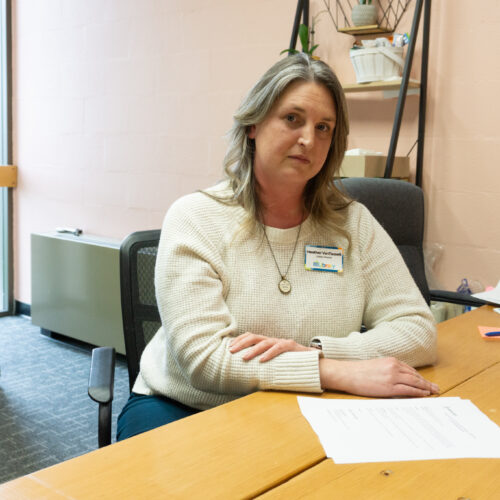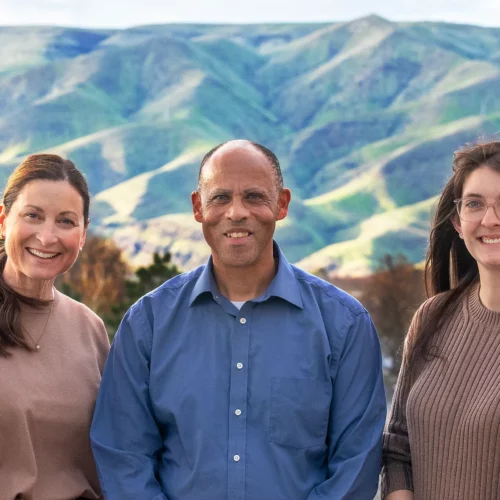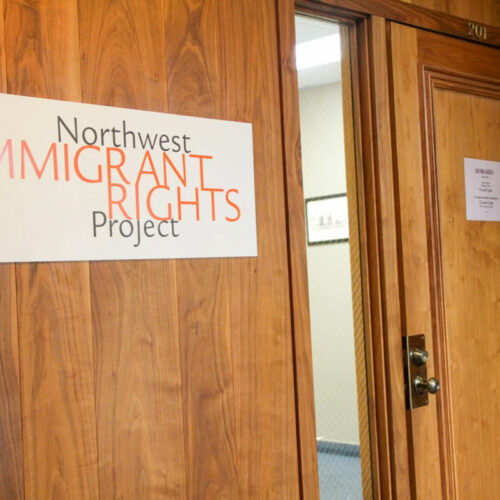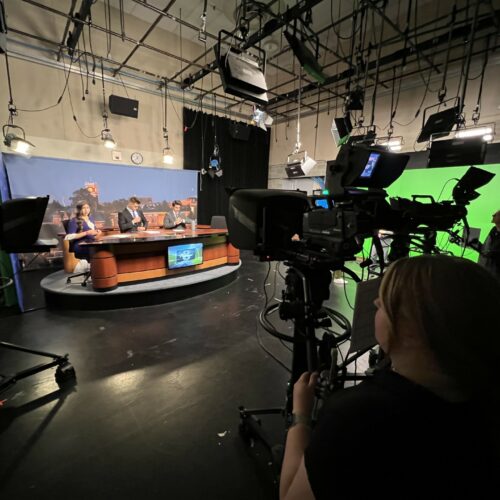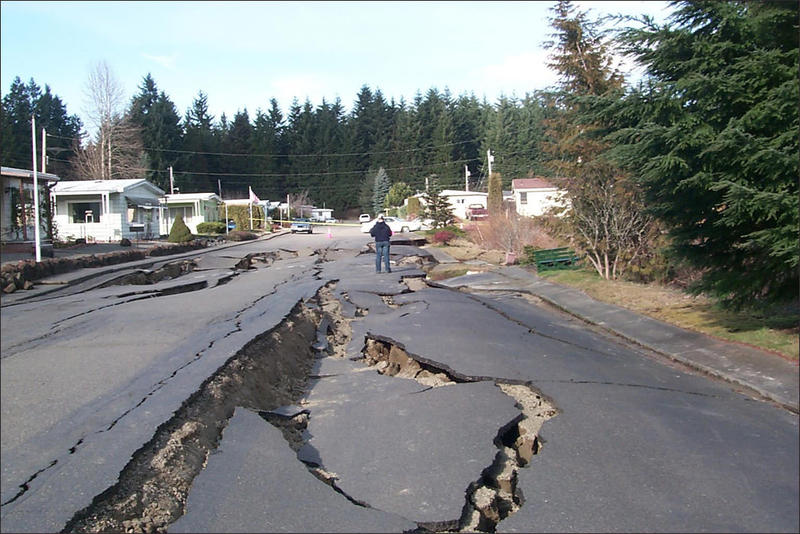
Emergency Managers Stress Need For Earthquake Preparation East Of Cascades
WATCH
Representatives from the Washington Emergency Management Division recently gathered in communities around central and eastern Washington to disseminate information about potential earthquakes, their impacts, and how community members can be prepared for natural disasters.
The seminars were part of a collective effort to raise awareness of earthquake preparation in preceding the Great Washington ShakeOut, an event on Thursday, October 17 in which people can register to be a part of a statewide earthquake drill.
(Broadcasters and media outlets, including NWPB, will also participate in the exercise, including a preparedness drill at 10:17 AM.)
At the Monday, Sept. 30 preparation event in Pullman, earthquake geophysicist Megan Anderson spoke about the potential for an extremely large earthquake that could result from a slip between the fault line occurring between the Juan De Fuca and North American plates, an area known as the Cascadia Subduction Zone.
RELATED: How To Prepare A Good Disaster Kit And Be Two-Weeks Ready
Maximillian Dixon, hazards and outreach program supervisor for the Washington State Military Department’s Emergency Management Division, said an earthquake along the Cascadia Subduction Zone could bring extreme damage to communities along the I-5 corridor.
Anderson said that an earthquake along the Cascadia Subduction Zone could be less extreme for those living east of the Cascades, but people in the Inland Northwest would likely still experience light to moderate shaking, still resulting in some damage to buildings and infrastructure.

Road damage due to liquefaction from the 2001 Nisqually Earthquake in Thurston County, Washington. Liquefaction is when the soil turns to jello during intense shaking. CREDIT: DOGAMI ARCHIVES
Emergency managers say a lot of the burden for eastern Washington and Inland Northwest communities will come from having to help house and provide services for people who will be displaced from western Washington following the aftermath of a potential large-scale earthquake.
Hospitals, schools and senior living facilities will all likely be affected near the I-5 corridor, and the sick, young and elderly will likely need to utilize facilities east of the Cascades.
Dixon said if an earthquake occurs at the Cascadia Subduction Zone, people in Pullman may only have a few brief moments to immediately protect themselves before the shaking starts.
“We could only get two or three minutes of warning,” he said.
Dixon said the best thing you can do is immediately find cover within your immediate area and protect your head. This could be under a table or desk, but Dixon said it is important not to run away once the shaking starts, as people are often injured while trying to run from buildings during an earthquake.
Kiana Kabanje, disaster preparedness outreach program manager for the state Emergency Management Division, said it is important to plan and prepare ahead of a natural disaster such as an earthquake.
She recommended that people prepare a disaster kit that includes two weeks worth of supplies, food, water and medications. Kabanje said an appropriate quantity of emergency water is one gallon per person per day, as it will have to suffice for drinking, cooking and hygiene.
“It is important that everyone prepares individually,” she said. “So as not to be a burden for someone else.”
Dominic Alessio, a Pullman resident who attended the event, said after hearing the lecture he will now be conscious of the water and electricity lines in his home that could be damaged in an earthquake. He said he will also prepare emergency kits for his wife and him.
“It’s kind of like that old adage where, if you are prepared, you don’t have to be standing in line with everyone else,” he said.
RELATED: How To Prepare A Good Disaster Kit And Be Two-Weeks Ready
Related Stories:
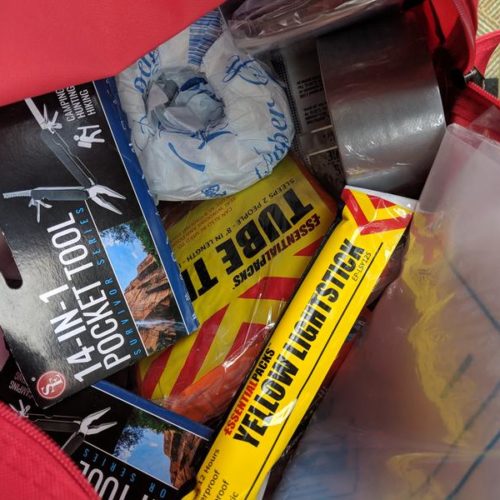
Are You ‘Two Weeks Ready’ For Post-Quake Survival? WA And OR Say You Should Be
The state of Oregon has set an ambitious goal to prepare more families in earthquake country to be “two weeks ready” after a disaster. Washington’s emergency management agency is also seeking more funding to prepare people in a similar way.
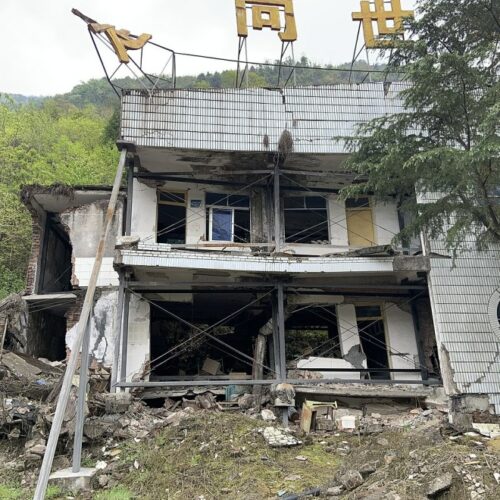
Hundreds Of Washington Schools Start Academic Year With Failing Grade On Quake Safety
Tens of thousands of public school students in Washington state returned to classes this month in school buildings judged to be at risk of collapse in a strong earthquake. A new report to the state Legislature prepared by state geologists and a structural engineering firm gave the lowest possible seismic safety rating to more than 90 percent of the school buildings assessed in a selective statewide survey.
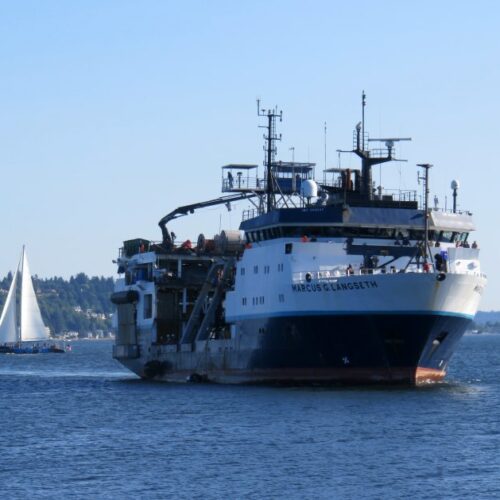
Seismic Research Ship Goes Boom-Boom To Seek Answers At Origin Of The Next Big One
Earthquake researchers are eager to dig into a trove of new data about the offshore Cascadia fault zone. When Cascadia ruptures, it can trigger a megaquake known as “the Big One.” The valuable new imaging of the geology off the Oregon, Washington and British Columbia coasts comes from a specialized research vessel.


